Toyota RAV4: From Ultimate Edition to Revolutionary Compact SUV
And it is no different with the Toyota RAV4, which, without an iota of doubt is the name that epitomizes all compact SUVs that have been very much a household name for as long as one can reasonably recall. Launched the first time way back in 1994, the Toyota RAV4 has slowly and laboriously grown through the ranks to be one of those niche vehicles that is now a most popular and versatile SUV on earth. Practically reliable and fuel-efficient, and most of all, suited to those who prefer a versatile car that would tame the beats of city driving but also take it down highways, the car remained an ideal choice for most commuters.
Take us down here to discover in detail the history of development of the Toyota RAV4, reasons why it so fantastic, performance features and safety features-all in the entire SUV market.
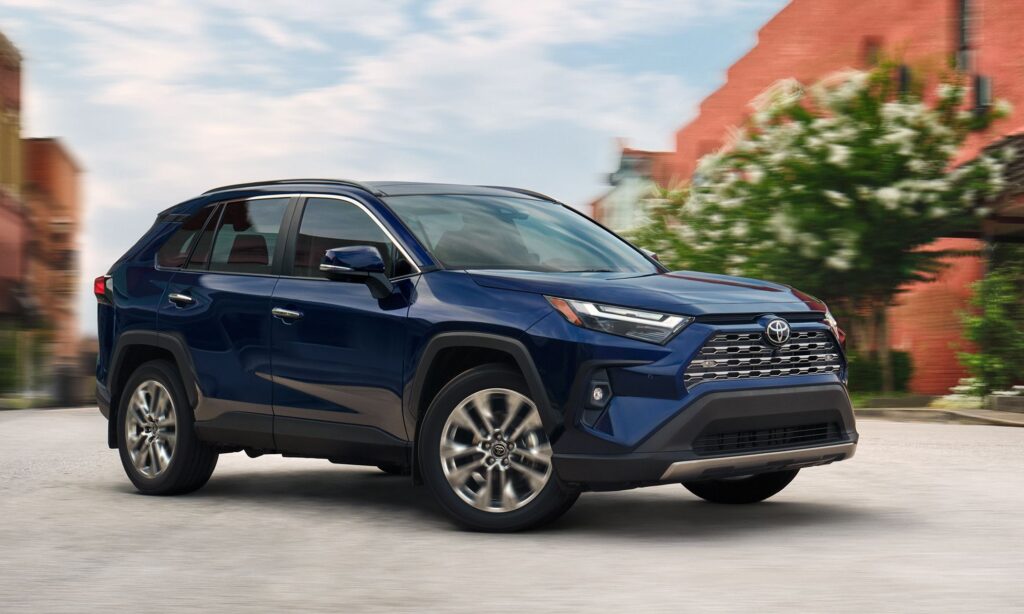
Early History of Toyota RAV4
The ancestors of the Toyota RAV4 go way back to the early 1990s when the SUV market had gained full speed. Good body on the frame SUVs- Jeep Cherokee and Ford Explorer-were already market leaders in that race but demand for smaller, more fuel-efficient, and car-like vehicles was building at rocket speed. All this was what Toyota embraced, designing an SUV compact so that it could express comfortableness of a sedan yet portray to be a rugged off-road vehicle.
The First Generation, 1994-2000A first generation Toyota RAV4 was the car that differed in all respects. In fact, it was first released quite some time ago in 1994 and later extended its reach to other roads in other countries. The compact model had two doors with the first edition, but the company later introduced a four-door version of it. The chassis was next to that of a Corolla-a version of the model of Toyota car; hence, it weighed much less than the conventional off-road SUV car.
A Toyota RAV4 with a unibody construction rather than truck-like body on a frame design made it a lot more fuel-efficient and much easier to drive and give a better ride over their competitors. One of the most widely demanded cars among the urban users who demand more utility than what a sedan can offer but do not want the big, heavy SUV.
Second Generation 2000-2005
That was quite radical in design and scale compared to the original version. Practically every inch, all along length, width, and height deliver lots of volume and space comfort, as compared to the just-grown-up model. Of course, it was its 4WD system, heavy enough-duty to lend the Toyota RAV4 that little extra dimension of adventure for people who would settle for nothing less than a car that’s capable of withstanding a bit of rugged adventuring.
Still another generation, another round of facelift and a more sprightly powertrain. For this, one had a 2.0-liter four-cylinder unit that could be ordered either with a manual or an automatic transmission. It was a performance and fuel-economy compromise. The 2.4-liter unit came into the fray in 2001 with better outputs for those who were looking at its ride needing more.
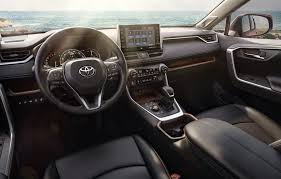
The Third Generation (2005-2012)
The 2005 Toyota RAV4 was perfect in every respect of being one size and feature better than its precursor. At least in one area, it was larger than the predecessor, but fit elegantly into the bounds of precisely just what the RAV4 is intended to be-practical and effective. That, along with a whole lot of other features that distinguishingly grant an unusual flair to the vehicle, its third-row seat-that feature not so common for the compact SUV at the time-made the Toyota RAV4 able to answer the family’s call for more passenger room without trading over to a full-size SUV.
To feel so hot and sporty, Toyota thus equipped the 3.5-liter V6, so it made the Toyota RAV4 the most powerful compact SUV in town back then. And third-generation Toyota RAV4 remains one of the very first compact SUVs to take an advantage of KDSS or Kinetic Dynamic Suspension System by Toyota that brings off-road capability without compromise for comfort on road.
Fourth Generation, 2012-2018. The fourth generation of the Toyota RAV4 played in 2012 with a general design overhaul. Aesthetically, a better streamlined general body shape featured one modernized in a more sleek and contemporary look with much better lower resistance aerodynamics. Interiorly, it received better quality material inputting much more technology features and more spacious cabin areas than its predecessor.
What really threw it for a spin, though, was the introduction of a fuel-efficient 2.5-liter four-cylinder version that replaced the V6 unit and was mated with this new six-speed automatic transmission also aimed at an order received globally on improved fuel efficiency and emission. This is something that the company did in 2016-a true game-changing hybrid powertrain. That’s a long time ago; the Toyota RAV4 was already one of the very first compact SUVs to offer mating of a hybrid assembly at a time when such technology was really not developed for that kind of vehicle at that point in time.
Fifth Generation: 2018-Present This was basically the first generation of the 2018 Toyota RAV4, which became spearheaded into a philosophy of utility, practicality and ruggedness for its compact crossover. It became fashioned more muscular, sporty and aggressive in its design that must be the one to eventually replace the forms of off-road vehicles from Toyota-the Land Cruiser, and the 4Runner.
Of course, two major powertrains are hosted under the bonnet of the 2018 Toyota RAV4: an older gasoline 2.5-liter four-cylinder engine and a hybrid version. That eight-speed automatic which comes along with the gasoline engine brings up a fine balance between power and competitive fuel economy, makes the hybrid version shine – at least on part of fuel efficiency in spectacular ways, especially in the city areas.
It really comes alive with the 2020 Toyota RAV4 Hybrid-one of the best fuel economies for any compact SUV in class: up to 41 mpg in the city and 38 mpg on the highway, according to the EPA. And then there’s the RAV4 Prime, an all-new plug-in hybrid that boasts great electric-only range plus the muscle of the gas engine for longer trips.
Performance/Handling
The Toyota RAV4 has balanced in both performance. They cannot boast of the raw power and towing capabilities that bigger SUVs hold but know some good balancing options for most types of driving required by most types of engines.
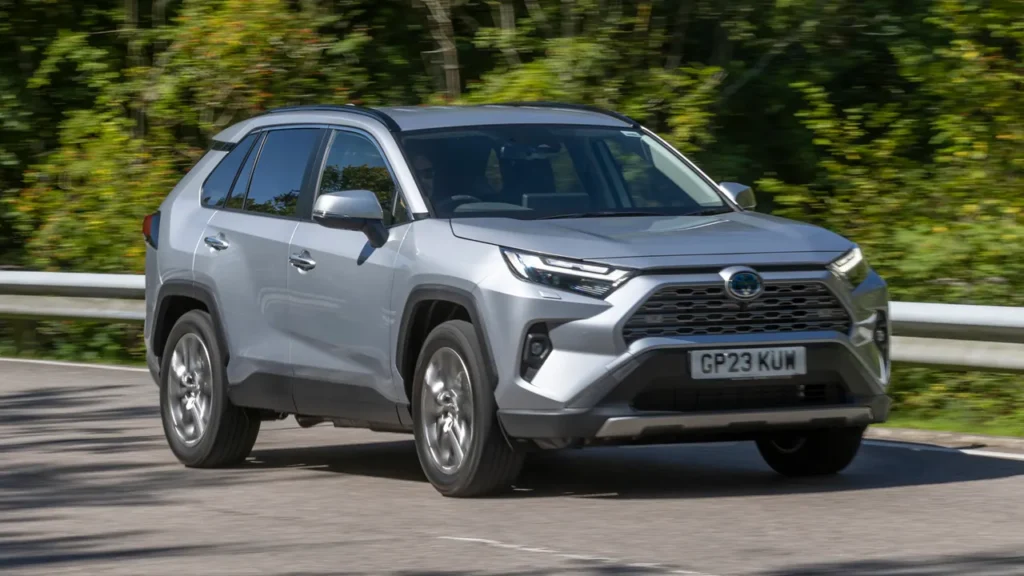
Engine Options and Powertrain
Something of a step closer to bringing that efficiency in fuel with its new 2018 Toyota RAV4 powertrain. This 2.5-liter four-cylinder really does come in pretty handy for about 203 horsepower, surely way over it for most drivers. An eight-speed automatic keeps efficiency optimized and does good jobs of looking after the both city and highway drives.
For the buyer looking for something a little greener or perhaps a little more fuel-sensitive, there’s the RAV4 Hybrid. That is when the 2.5-liter hybrid engine assumes both literal and figurative roles in mending the two together in a 219-horsepower marriage. Hybrid, of course, also comes standard with its all-wheel-drive system that affords better traction and stability on slippery and devious roadways.
Then there’s the RAV4 Prime: Toyota’s PHEV, with 302 horsepower-a pretty big deal more than its more conventional sibling, promising some 40 miles of electric-only range alone. It also has the Hybrid and Plug-in versions that have made RAV4 one of the most fuel-efficient vehicles in its class-and yet still delivering the power and flexibility SUV drivers require.
Handling and Ride Comfort
In a few words, the monocoque design and mass make the Toyota RAV4 ride, handle, and maneuver quite nimbler than most of its competitors in the larger, more conventional SUV class. It rolls through most of the tight turns and parking situations-one of the best reasons it’s so often well loved by city dwellers.
It’s by no means strictly off-road-only, but the RAV4 still has enough capability to tempt those who might want to go very lightly off-road. With buyers now seeking that combination of dirt roads and trails, the Adventure and TRD Off-Road trims can boast higher ground clearance and a more rugged suspension setup to deal with markedly tougher terrain.
It would appear RAV4 on-road suspension feels a bit too soft and absorbs a couple of bumps and several types of imperfections on the road. The cabin is very silent; drive dynamics have been set up pretty pleasantly for long drives and commutes.
Interior and Comfort
The interior of the car has become much more impressive with the passing of every year of the RAV4. Generations were very good one after another regarding materials, technology, and comfort.
Seating and Cargo Space
Tight exterior does not necessarily mean that the interior has to be tight in the case of RAV4. This is in line with the fact that it is not a possessive interior room like full-size SUVs, yet RAV4 does offer great passenger and cargo rooming within its class. The car also seats five, interpreted as front and rear passengers who would get enough legroom as well as headroom. The folding rear seats of the car create even more cargo space when the need comes up.
Nice bonus: For another year, the RAV4 Hybrid and RAV4 Prime share the same model trim levels, though one might reasonably have anticipated this now anyway, with allegedly less cargo space – owing to that hybrid battery – than the more conventional variant. Still, though, it’s still one of the most spacious compact SUVs out there, with 69.8 cubic feet behind the rear seat for 2023.
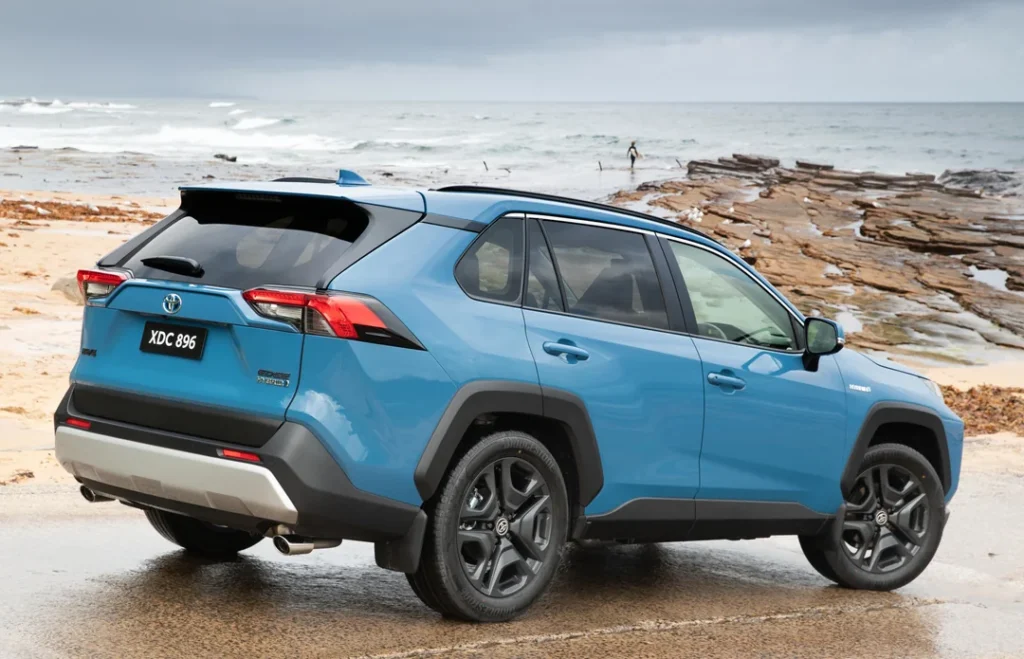
Technology and Infotainment
Most modern technology in Toyotas’ RAV4s is now brought directly to the palms of the buyer. All of its trims are part of its wireless smartphone connectivity, which now boasts the likes of Apple CarPlay, Android Auto, and Amazon Alexa. Navigation, SiriusXM satellite radio, to name a few, can be ordered as an option through a responsive interface on the screen of an optional Toyota Entune infotainment system.
Some of the other nice added features with more high-end models include high-end audio quality, which is better than in a standard RAV4, a wireless charging pad, and further up in the line, larger screen information systems. A bit of disappointment for those car buyers targeting only a little bit of that magic high-tech experience because this RAV4 boasts of part of the driver assistance safety kit of Toyota Corolla Cross Safety Sense 2.0, complete with some examples as adaptive cruise control, lane departure warning system, and automatic emergency braking.
Safety Features and Ratings
What was at the top of every brain when thinking of a Toyota and was no exception in the case of the RAV4, was safety. And the good news is that it comes standard with all of the trims of the RAV4 with the Safety Sense 2.0 package, so the RAV4 gets the best in class for safe tech from Toyota.
Standard Safety Features
Pre-Collision System with Pedestrian Detection
Lane Departure Alert with Steering Assist
Adaptive Cruise Control
Automatic High Beams
Road Sign Assist
With high-tech, active safety features and traditional safety features, the RAV4 also encompasses full airbags, stability control, and traction control-all factors for safe protection in any collision.
Other marks were also good for the RAV4. It acquired an A+ grade by the National Highway Traffic Safety Administration. In the very same year that the Top Safety Pick award was bestowed to it, the Insurance Institute for Highway Safety proclaimed it one among the safest vehicles under its class.
Hybrids and electric cars probably one of the most apparent trends of recent years, in a string of hundreds. The most recognizable representatives of all the attempts that Toyota makes in order to propose more eco-friendly and efficient alternatives for the standard SUVs would be Toyota RAV4 Hybrid and RAV4 Prime.
Toyota RAV4 Hybrid
One is the RAV4 Hybrid, with fuel economy impressive to 41mpg for the city, 38mpg on the highway. Sure enough, one of the most efficient SUVs today now roaming the market due in part with its gasoline engine and an electric motor combining for a hybrid powertrain totaling 219 horsepower, with the best balance between efficiency and performance.
And a base model, of course, comes with all-wheel drive as standard, so there are lots of excuses to put up with the not-so-bad amount of road conditions to be suffered through. It rides very smoothly, too. With efficiency gains under its belt, it would make a serious thorn in the side of the eco-friendlies who don’t wish to sacrifice practicality or capability.

RAV4 Prime (Plug-In Hybrid)
One model, RAV4 Prime, packs over 40 miles of electric-only range and carries an engine putting out 302 hp. In one respect, it is a mashup of the power efficiency add-on with further range-a combination very rare for such a model. And if the battery runs out, the gas engine cuts in, and therefore the driver will never have to lose his car on a long trip to town.
That vehicle, being one of the most crowded SUVs in the market, should end up probably having a 0-60 mph time of 5.7 seconds. That car is the RAV4 Prime, though offering an economic mode of movement stands to pose the foundations for the spirited driving enthusiasts.
The interaction of air and solid objects, primarily the vehicles, including cars, airplanes, and other movable products, is termed aerodynamics. In the automobile industry, aerodynamics determines a vehicle’s fuel efficiency, handling, and performance. Aerodynamic design for automobiles seeks to minimize the drag-resistance that air imposes on a moving vehicle-and optimize the amount of downforce, which gives a car a better grip at high speeds on the road.
In the case of a vehicle, the ideal aerodynamic shape must minimize the number of air turbulences and frictions for it to slice through the air. This would equate to smooth surfaces, sharp edges, and extra attention paid to car designs concerning the front, rear, and underbodies. Cars like the Toyota RAV4 are sleek, sculpted bodies with smooth underbodies in order to reduce drag hence increasing fuel economy and reducing noise in the cabins.
A further purpose of aerodynamics is stability. Air passing over and around the car at such high speeds can also create lift, which reduces tire grip. In this case, spoilers, diffusers, and air vents are employed to manage the flow of air to that the vehicle will not wobble or act unresponsive by especially hitting troublesome conditions. Thus, aerodynamics has become an important aspect of modern vehicle engineering where performance, efficiency, and safety are balanced.
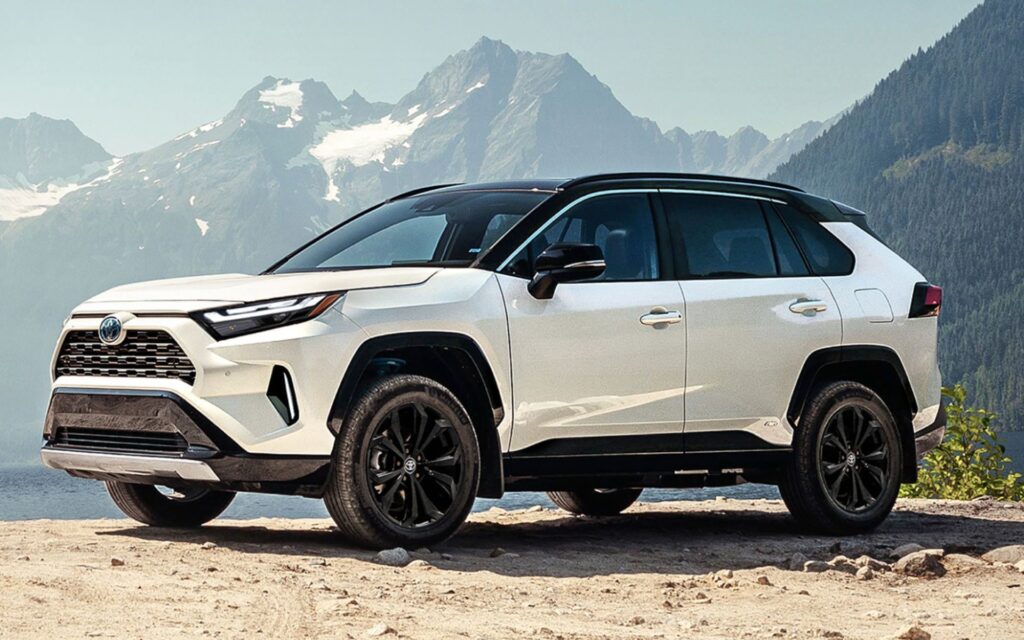
Conclusion OF Toyota RAV4
Since its introduction into the market, this is one Toyota RAV4 compact SUV proudly standing on top of allchart popularity scale due to reliability, practicality, and versatility. RAV4, which was introduced many decades ago, has grown up to date and developed enough to suit the pulse of a newer driver by offering variations with varied powertrains, innovative safety features, and modern technology.
Whether it’s a workaday, no-frills hauler, a go-anywhere off-road performer, or one of those impossibly fuel-sipping hybrids, Toyota’s had a RAV4 for nearly any kind of driver. And with the model continuing its march into hybrid and plug-in hybrid technology, its position at-or-near-the-top of the compact SUV heap seems secure.
Pingback: Top 10 Most Famous Toyota Highlander - CARS CRAFTERS
Pingback: Top 10 Most Famous Toyota Venza - CARS CRAFTERS